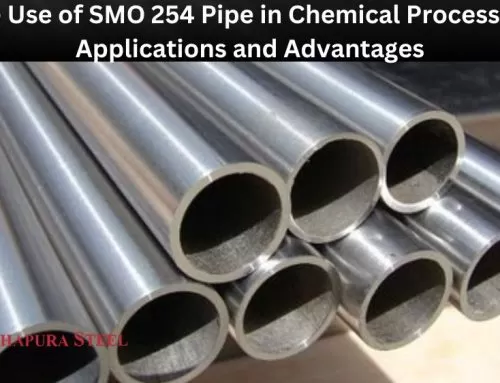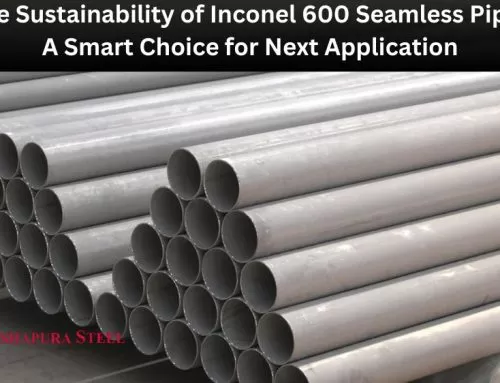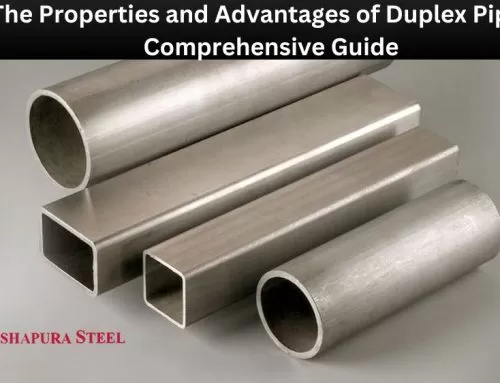The choice between hollow and solid section pipes is critical in many industries. Hollow section pipes are lightweight, making them easier to handle and install. In addition, they offer more flexibility in terms of installation due to their reduced weight. On the other hand, solid-section pipes provide improved structural integrity compared to hollow sections with greater stiffness and load-bearing capacity. Although costlier than hollow sections, they often require less material for any application since wall thickness can be minimized without compromising strength or stress distribution capabilities. As such, each type offers specific advantages depending on the situation—check which best suits your project’s needs before proceeding!
What are Hollow Section Pipes?
Hollow Section Pipes are tubular pipes with a hollow centre and thin walls used for various structural purposes in construction, engineering and other industries. The beauty of these pipes is that they can be fabricated to almost any size, shape or thickness depending on the application while maintaining structural integrity. They have a great strength-to-weight ratio, excellent durability and corrosion resistance, good weldability characteristics, and are recyclable – making them an ideal choice for a wide range of applications, including mechanical structures such as scaffolding towers, vehicle frames and columns; architectural applications such as roof trusses; and electric transmission lines.
What are Solid Section Pipes?
Solid Section Pipes are cylindrical pipes with a solid wall section throughout their entire length. Depending on the specific material, these pipes are used in various situations, such as industrial, agricultural and plumbing applications. Solid section pipes offer several advantages over traditional pipe systems due to their uniform outside diameter, which provides them with excellent strength and pressure ratings. They can be readily connected using flanges or devices such as pipe clamps and couplings. This makes them ideal for large piping systems or projects requiring considerable installation time.
Difference Between Hollow Section Pipes & Solid Section Pipes
Strength:
Strength is an essential factor to consider when choosing pipes for heavy-duty applications such as in the construction of buildings, bridges, and structures. Hollow-section pipes have a higher strength-to-weight ratio than solid-section pipes. Hollow section pipes are lightweight but sturdy, making them suitable for elevated structures. On the other hand, solid-section pipes are heavier and denser, making them perfect for underground pipelines since they can withstand heavy pressure and prevent ground collapse.
Durability:
Durability plays a crucial role in determining the lifespan of pipes. When choosing pipes for various applications, the pipes’ serviceable life duration should also be factored in. Hollow section pipes are more durable than solid section pipes. This is because they are mostly cold-formed from a single sheet of steel, making them consistent in thickness and shape. On the other hand, solid section pipes are made by melting steel into molten form, casting them, and cooling them under specific conditions. This process can lead to inconsistencies in the pipes’ thickness and shape, making them more prone to damage.
Suitability:
Suitability refers to pipes’ ability to meet an application’s specific requirements. When choosing pipes for an application, the parameters include the pipe’s dimensions, surface finish, and loading requirements. Hollow section pipes are more versatile than solid section pipes. They come in various sizes, shapes, and thicknesses, making them suitable for various structural and non-structural applications. On the other hand, solid-section pipes have limited sizes and shapes, making them less versatile than hollow-section pipes.
Transportation:
Transportation is a critical aspect of pipe installation. Pipes that are easy to move and transport may reduce installation time and labour costs. Hollow section pipes are lighter and easier to transport than solid section pipes. They can be shipped in preassembled sections or rolled into coils to facilitate transportation. On the other hand, solid-section pipes are bulkier and denser, requiring specialized equipment and dedicated vehicles for movement.
Cost:
The cost of pipes is usually a significant consideration in construction projects. The price of pipes can differ significantly between hollow-section pipes and solid-section pipes. Generally, hollow section pipes are less expensive than solid section pipes due to the lower amount of material used and the ease of manufacture. However, in some cases, when the application requires solid section pipes, there may be no alternative but to go for them, even though they are more expensive than hollow section pipes.
Conclusion:
In conclusion, choosing between hollow and solid section pipes depends on various factors, including strength, durability, suitability, transportation, and cost. Hollow section pipes have a higher strength-to-weight ratio and are more durable, versatile, and easier to transport, making them suitable for various applications. On the other hand, solid-section pipes are more suitable for underground pipelines due to their weight and density. Therefore, you must consult an experienced pipe supplier or manufacturer to help you choose the right type of pipe for your specific application.






